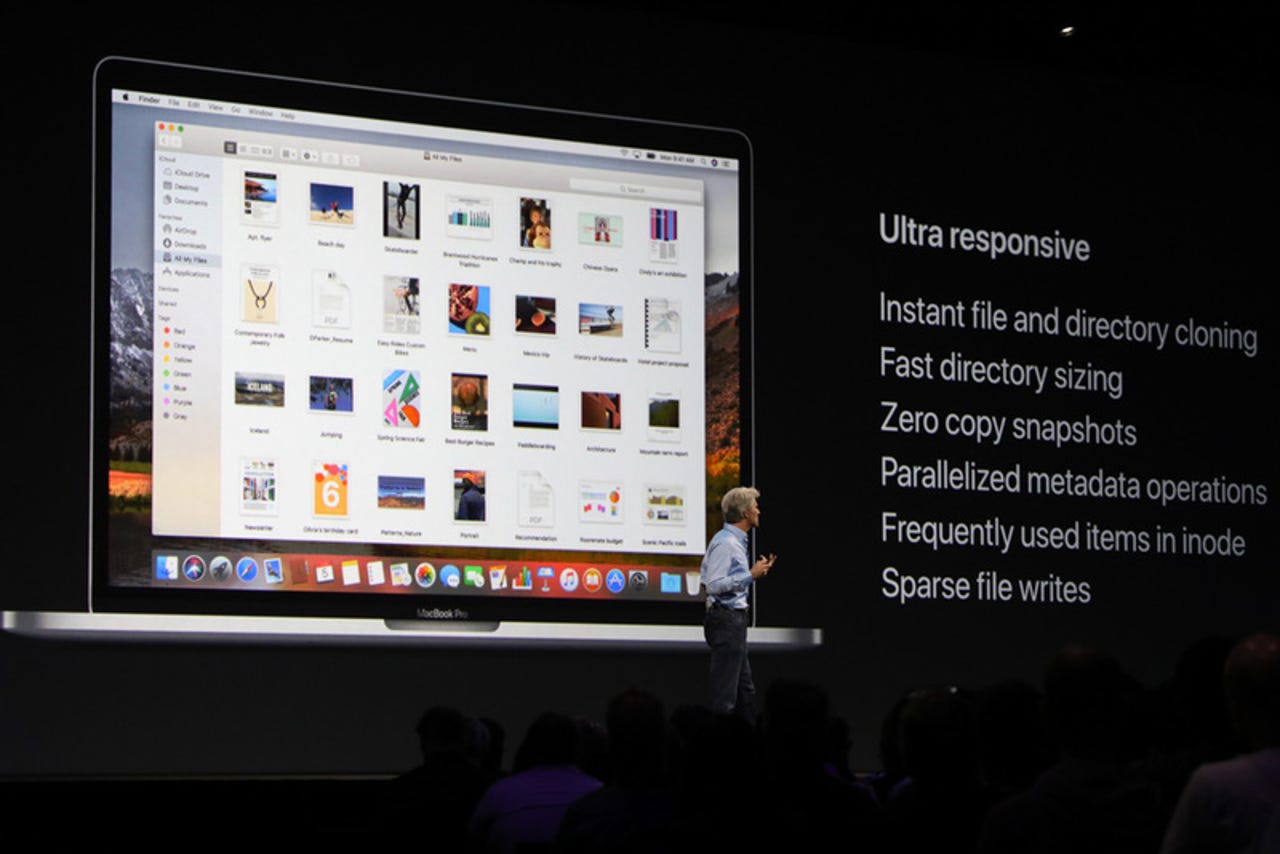Mac users, meet APFS: macOS's new file system


WWDC 201
This morning at WWDC, Apple announced that APFS will be the default file system in macOS High Sierra. That's great news -- and here's why.
Meet APFS
Last year Apple introduced their a new file system to developers, planning a 2017 release. The macOS's UNIX core makes it easy to slide in new file systems, so APFS is easy to make the standard FS, as it is for iOS today.
Cool features
APFS has some important capabilities, including
- Nanosecond timestamp granularity: Important for proper journaling and clustered systems.
- TRIM support: TRIM helps manage out of date blocks. APFS runs TRIM operations asynchronously, after metadata is safe in persistent media.
- Copy-on-write metadata: Helps data survive system crashes.
- Flexible native encryption: Choose different encryption schemes for each APFS volume, including multi-key encryption with per-file keys for file data and a separate key for sensitive metadata.
- Native SMB: SMB is what the non-Apple world uses to share data over networks.
- 64-bit inodes: APFS supports over 9 quintillion files on a single volume.
New pro features
Those features get APFS up to feature parity with just about any modern file system, but there's more. Here are the features that pro users will love:
SSD optimization: APFS offers a key new feature for SSDs: Write coalescing. Flash SSD writes are slow, so instead of many independent small writes, APFS will coalesce writes into a group and perform one big write for high performance.
No more repartitioning: APFS volumes can grow and shrink dynamically, up to the capacity limit of the underlying storage.
Cloning: Cloning creates a copy of a file (or directory) without taking up more drive capacity. As the clone is modified, only modified blocks are written to new locations. You can have multiple versions of a file with little overhead.
Snapshots: Common in enterprise storage systems, snapshots are read only instances of your file system. When blocks in the file system are modified, the old blocks are kept so the file system can be restored to an earlier point in time. Handy if malware pooches your Mac.
The once-over in the keynote didn't cover some other issues that we might see, such as how APFS handles case-sensitivity. And, presumably, Time Machine and FileVault also now work with APFS.
The Storage Bits take
Apple's move to APFS is a decade overdue. I regularly see damaged files -- I have over 20TB of storage capacity and store thousands of large files -- that I believe are caused by HFS+ bugs.
So, I welcome APFS. However, a couple of cautions:
- If you are in the middle of a professional project, especially with video, you should consider not upgrading until you're done. Just in case.
- Back up your data before you upgrade. It'll probably work fine, but you don't want to be the person where it doesn't with no backup. Super-duper! and Carbon Copy Cloner both offer free cloning.
- Expect some performance differences. Nothing major, and most should be better -- such as file duplication -- but optimizing for SSDs may hurt Fusion Drive and hard drive performance in some workloads.
But, all in all, this is very good for Mac users and macOS. And long overdue.
Courteous comments welcome, of course.